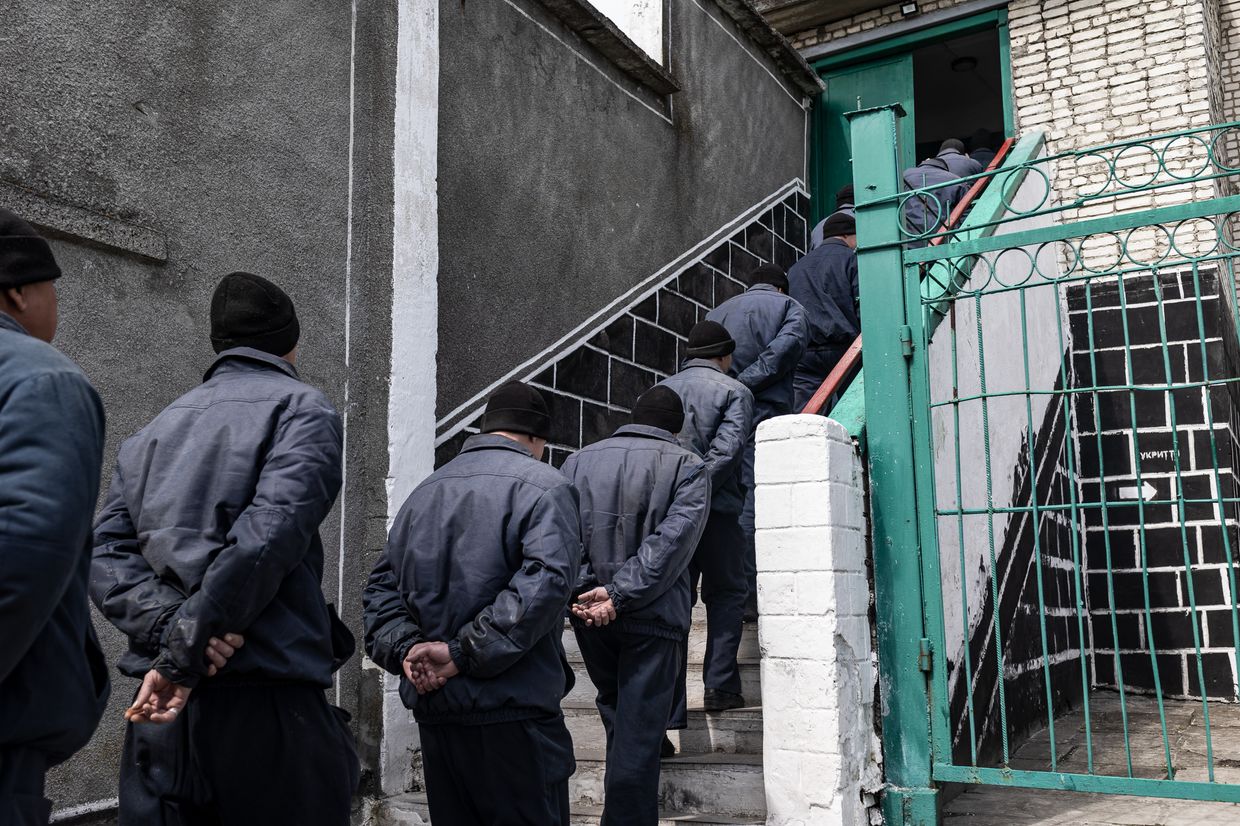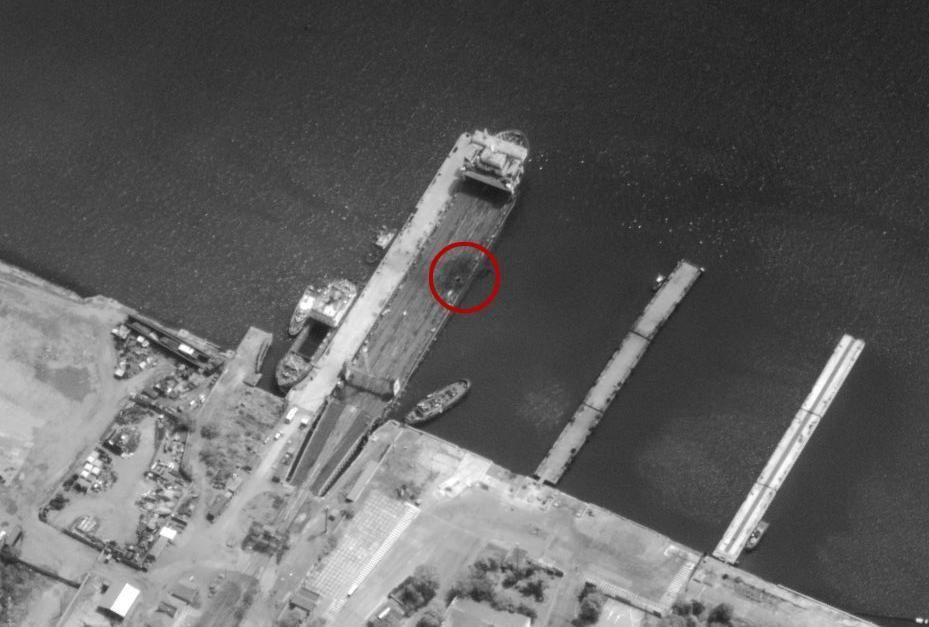Ukraine war latest: President's Office confirms Washington allowed Kyiv to strike inside Russia with US arms near Kharkiv

Key updates on May 31:
- Presidential Office confirms Washington allowed Kyiv to strike inside Russia with US arms near Kharkiv
- 75 Ukrainian prisoners brought back from Russian captivity
- Ukraine signs security agreements with Sweden, Norway, Iceland
- Ukraine strikes ferry crossing, oil depots in Russia's Krasnodar Krai, General Staff says
- SBU drones destroyed Russia's long-range radar in Crimea, sources say
The U.S. gave Ukraine permission to use American-supplied weapons to strike targets in Russia located near the border with Kharkiv Oblast, President Volodymyr Zelensky's spokesperson, Serhii Nykyforov, confirmed for the Kyiv Independent on May 31.
Washington still prohibits Ukraine from using ATACMS and other long-range U.S.-supplied weapons for strikes deeper inside Russia, U.S. officials said.
Moscow launched a new offensive on May 10 in Kharkiv Oblast. While the Ukrainian military said it has managed to largely stabilize the situation, Russia has continued to launch attacks at the city of Kharkiv and the surrounding area.
Citing unnamed American officials, Politico reported on May 30 that President Joe Biden's administration had given the go-ahead for Kyiv to attack targets inside Russia but "solely near the area of Kharkiv." The report was then confirmed by other outlets, including ABC News and the Associated Press (AP).
Nykyforov previously welcomed this move in an interview with the Guardian, published on May 31.
"It will significantly boost our ability to counter Russian attempts to mass across the border," Nykyforov told the Guardian in answer to the question about permission from the U.S. to strike on Russian soil.
The Biden administration's decision allows Ukraine to use U.S.-provided weapons to strike Russian soldiers and command, as well as control centers, the Guardian said.
The Pentagon, in contrast, insisted on May 30 that there has been "no change" in policy regarding the use of U.S. arms without specifically mentioning attacks near Kharkiv Oblast.
Zelensky wanted to use long-range weapons such as the British-made Storm Shadow missiles, but the U.K. had not given "100% permission" to do so, according to the Guardian.
The Ukrainian president suggests the U.K. is waiting for the White House's decision. But the recent American shift is unlikely to change the position either, the Guardian said.
"We raised this issue twice. We did not get confirmation from him (David Cameron, the foreign secretary)," Zelensky said, adding that the final decision by the U.K. and other states will depend on the "consensus," including the crucial position of the U.S.
75 Ukrainian prisoners brought back from Russian captivity
Ukraine brought back 75 people from Russian captivity, President Volodymyr Zelensky said on May 31.
This includes service personnel of the Armed Forces and the National Guard, border guards, and four civilians.
The former captives were exchanged for 75 Russian soldiers, RIA Novosti claimed, citing the country's Defense Ministry.
"Throughout all of this time, we have not stopped working for a single day to bring everyone home from Russian captivity," Zelensky said on X.
"We remember about every person. We are making every effort to find each and every one of our people. I am grateful to the team responsible for the exchanges."
The released captives include 70 men and five women, including 19 defenders of Snake Island, 14 personnel who defended the Chornobyl Nuclear Power Plant, and 10 defenders of Mariupol, the Coordination Headquarters for the Treatment of Prisoners of War reported, confirming that they were released as part of an exchange.
This is the 52nd prisoner exchange since the outbreak of the full-scale war. As of May 31, 3,210 Ukrainian soldiers have been freed from Russian captivity, the headquarters said.
The headquarters thanked the United Arab Emirates for their role in facilitating the latest exchange.
Zelensky named a possible all-for-all prisoner of war (POW) exchange as one of the ideas to be discussed during the upcoming global peace summit in Switzerland in June.
The previously reported prisoner exchange occurred on Feb. 8, with 100 Ukrainian POWs freed from Russian captivity.
Before that, on Jan. 3, 230 prisoners were exchanged in the largest prisoner exchange since the start of Russia's full-scale invasion.
Ukraine signs security agreements with Sweden, Norway, Iceland
President Volodymyr Zelensky signed bilateral security agreements between Ukraine and Sweden, Iceland, and Norway on May 31.
The treaties are based on a pledge made by the Group of Seven (G7) countries last July and are designed to help Kyiv fend off Russian forces and deter future aggression.
"Ukraine will sign three security agreements in one day, establishing predictable and long-term defense assistance and comprehensive support," Zelensky said.
According to a press release from the Presidential Office, Sweden will provide Ukraine with around 2.2 billion euros ($2.38 billion) per year through 2024-26, an amount that will increase during the 10-year term of the agreement.
Iceland will allocate almost $30 million per year in aid to Ukraine from 2024 until 2028. The Nordic country will help to finance the purchase and supply of defense equipment and cooperate with the Ukrainian defense industry.
Oslo pledges to provide Ukraine with at least $1.3 billion in military aid in 2024. Overall, Norway invested about $6.9 billion in the long-term Nansen Program, covering the period between 2023 and 2027, the agreement says.
Ukraine has signed similar deals with Belgium, Spain, the U.K., Germany, France, Denmark, Italy, Canada, the Netherlands, Finland, Portugal, and Latvia.
Ukraine strikes ferry crossing, oil depots in Russia's Krasnodar Krai, General Staff says
Ukrainian forces struck a ferry crossing and an oil depot at Port Kavkaz in Russia's Krasnodar Krai with missiles overnight on May 31, the General Staff of Ukraine's Armed Forces reported.
Port Kavkaz lies at the Kerch Strait, which divides Russia from occupied Crimea. Only one day earlier, the Ukrainian military reported a strike against the ferry crossing at the Kerch port on the Crimean side of the strait with ATACMS missiles.
Telegram channels and Russian authorities reported a fire at the oil depot earlier in the day. The General Staff said that the depot was damaged by several Ukrainian-made Neptune missiles but did not elaborate on the extent of the damage.
The military added that explosions at targeted areas were confirmed, but "the accuracy with which they were hit is being investigated."
Russian authorities claim that there are multiple casualties among the employees of the oil depot as a result of the strike. The Kyiv Independent could not verify all the claims.
Another oil depot in Krasnodar Krai was hit in a drone attack, according to the General Staff.
The recent attacks were the result of a "several-days-long operation aimed at destroying the logistics crucial for Russian forces in Crimea," sources in the Security Service of Ukraine (SBU) told the Kyiv Independent.
"According to preliminary information, a comprehensive strike targeted substations and power supply grid, as well as oil product supplies in Russia's Krasnodar Krai," the source noted.
The operation was carried out jointly by the SBU and other units of Ukrainian defense forces, the source said.
First, the military launched a missile attack on two ferries traveling to Port Kavkaz, which were used by Russia for military logistics. SBU drones subsequently carried out an attack against substations that supply energy to occupied Crimea and against ports in the Kerch Strait, according to the sources.
The same night, the SBU and the Navy reportedly attacked the oil depot at the Kavkaz Port, which stored oil products destined for Crimea, according to the source.
SBU drones destroyed Russia's long-range radar in Crimea, sources say
Drones operated by the Security Service of Ukraine (SBU) destroyed a Russian Nebo-SVU long-range radar system in Crimea overnight on May 30, a source in Ukrainian intelligence services told the Kyiv Independent on May 31.
The system, worth around $100 million, was positioned near Armiansk, a town in the north of the occupied Crimean peninsula, the source said.
According to the source, the radar was monitoring a 380-kilometer-long (around 235 miles) sector of the front and helped to protect Russian military facilities in Crimea.
After the attack, satellite intelligence recorded that the radar was shut down and has not been brought back online since then, the source said.
"This operation 'blinded' Russian air defenses on a large segment of the front," the source said.
The previous week, a Ukrainian drone struck an early-warning Voronezh M radar in the Russian city of Orsk, in Orenburg Oblast, a source from Ukraine's military intelligence agency told the Kyiv Independent.
The Washington Post then reported some days later, citing an unnamed U.S. official, that the U.S. was concerned about Ukraine striking radar stations on Russian territory as it could "dangerously unsettle Moscow."
















